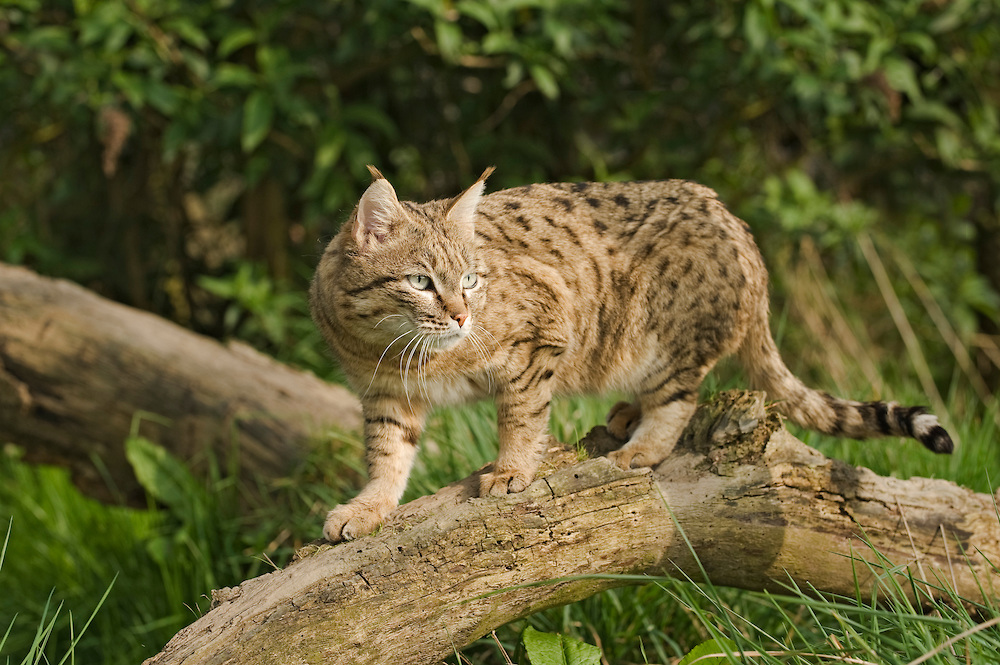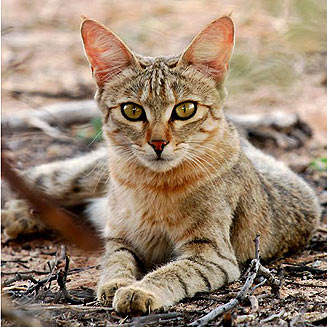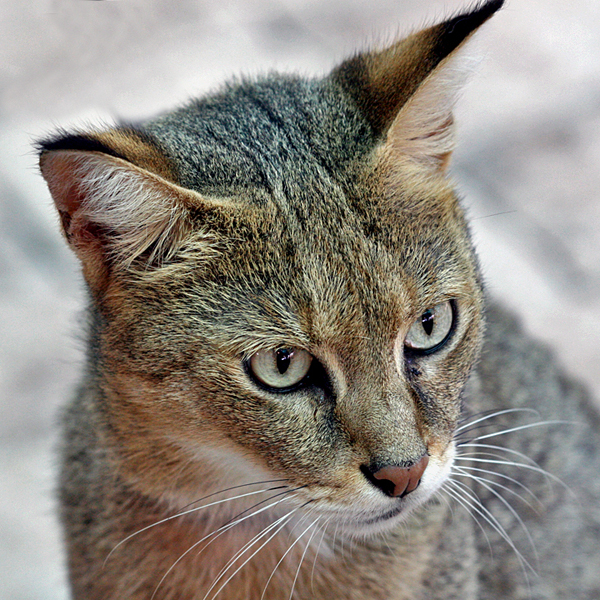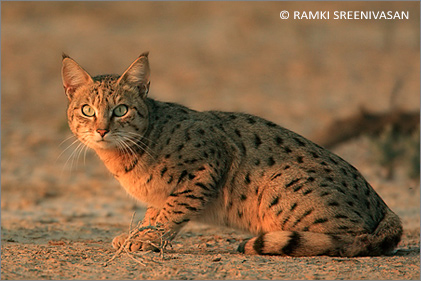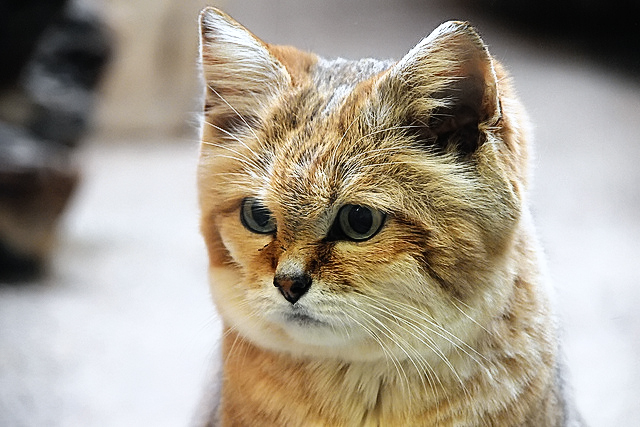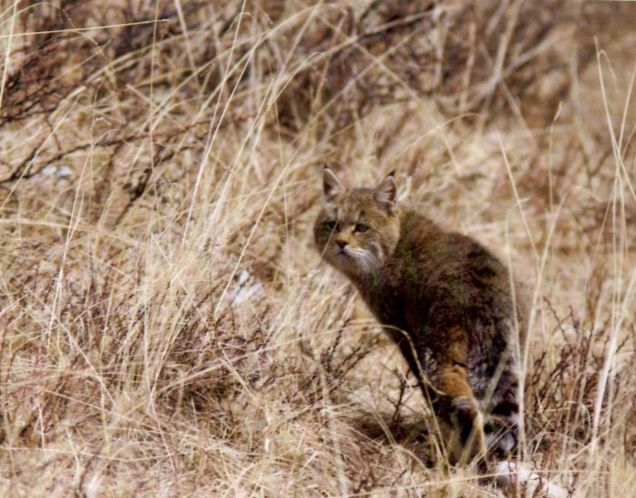The Wildcat
The Wildcat is a species complex comprising 5 different Wildcat subspecies. A species complex is a group of organisms that are so similar in appearance/other features that the boundaries between them are often unclear. These animals are so closely related that they can interbreed. Below are pictures of some of the different Wildcats found around the world.

African Wildcat
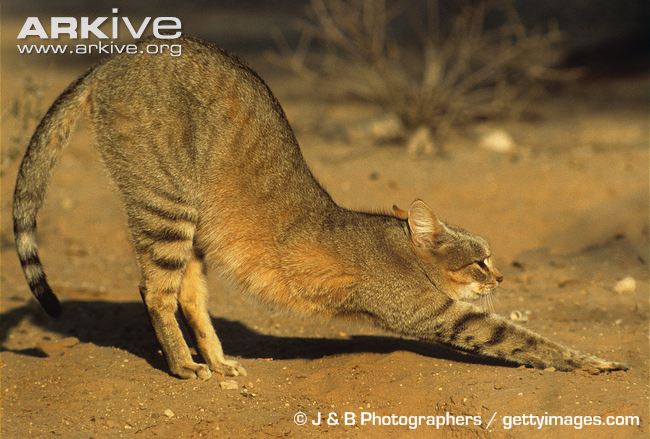
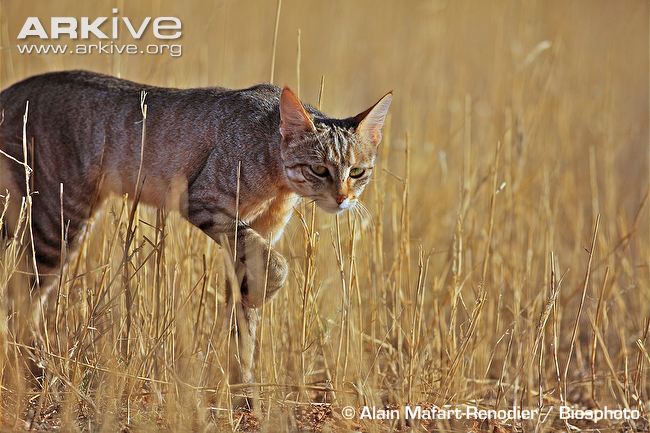

Here is an example of a European Wildcat. The European Wildcats who live in Scotland are known as the Scottish Wildcats aka “The Highland Tiger”
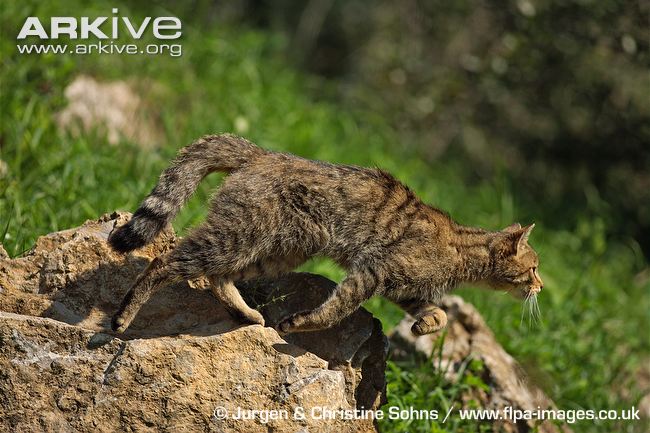

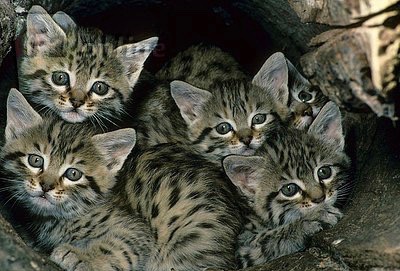
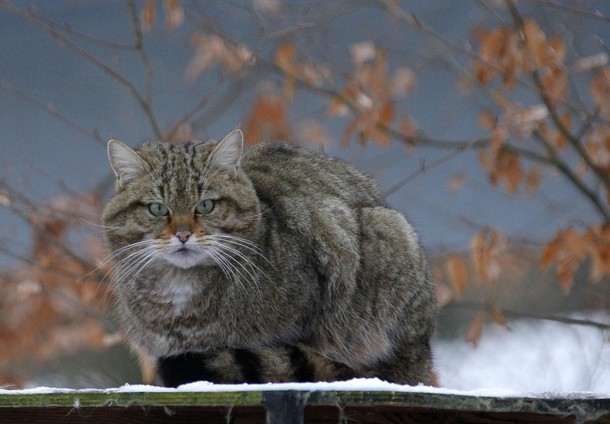
A European Wildcat is seen at Skanes Djurpark, Sweden, by Yves Herman
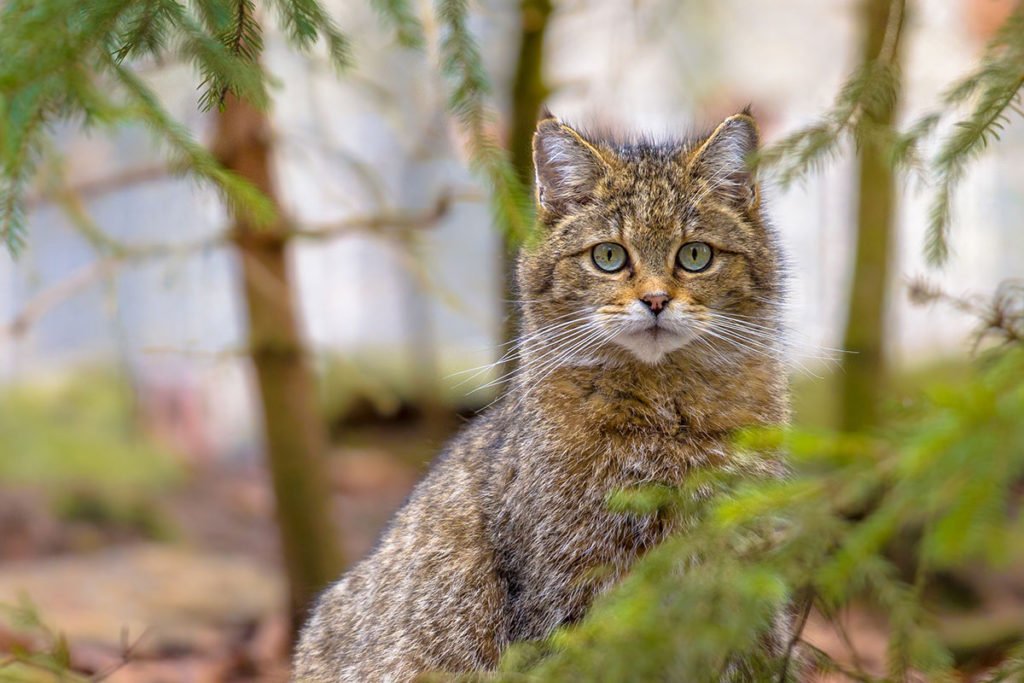

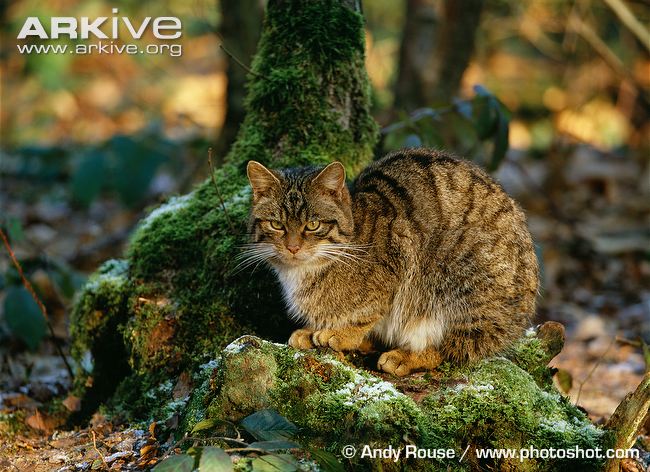
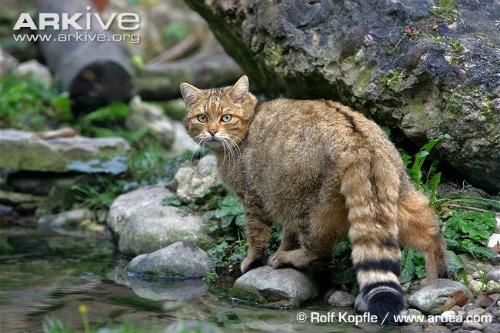
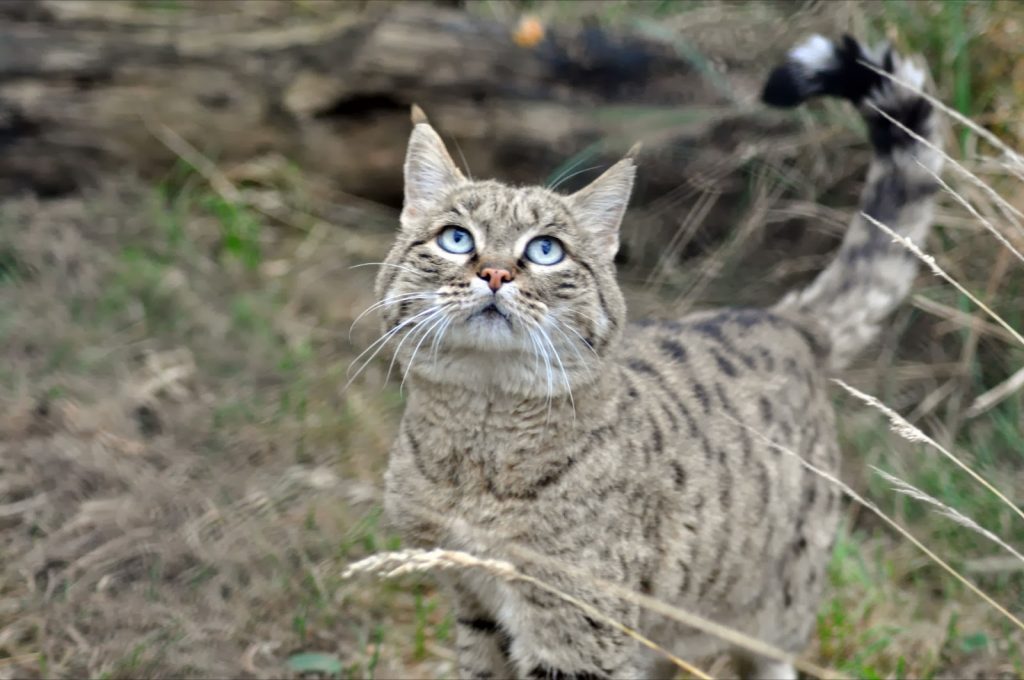
Chinese Mountain Cat
Chinese Mountain cat
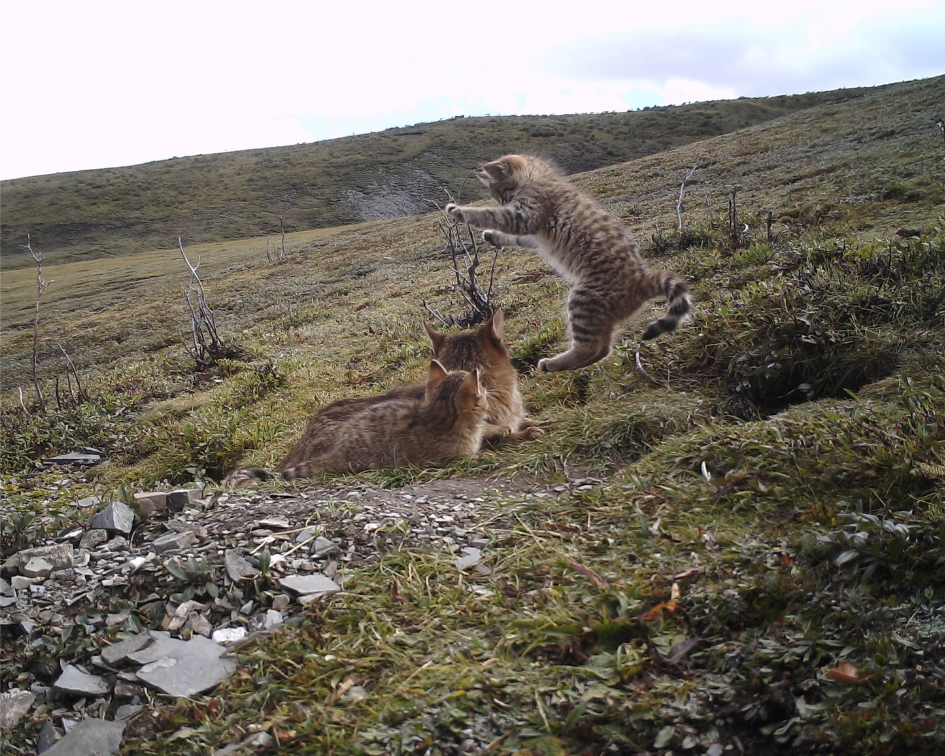
Wildcat
Kingdom: Animalia
Phylum: Cordata
Class: Mammalia
Order: Carnivora
Family: Felidae
Subfamily: Felinae
Genus: Felis
Species:
-African Wildcat (Felis lybica) [Africa]
-Southern African Wildcat (Felis cafra) [Southern Africa]
-Chinese Mountain Cat (Felis bieti) [China]
-Asiatic Wildcat (Felis ornata) [Central Asia)]
-European Wildcat (Felis silvestris) [Europe]
Wildcat conservation status: https://www.iucnredlist.org/search?query=wildcat&searchType=species
The Wildcat is a small wildcat species complex found around the world. The Domesticated Cat evolved from one of these Wildcat subspecies.
A 2007 study of feline mitochondrial DNA of approximately 1,000 cats from many different regions (including Africa, Azerbaijan, Kazakhstan, Mongolia, and the Middle East) showed 5 genetic lineages of the wildcat population.These lineages are:
-African Wildcat (Felis lybica) [Africa]
-Southern African Wildcat (Felis cafra) [Southern Africa]
-Chinese Mountain Cat (Felis silvestris bieti) [China]
-Asiatic Wildcat (Felis ornata) [Central Asia)]
-European Wildcat (Felis silvestris) [Europe]
Out of these five, genetic mapping shows the Domestic Cat originated from the African Wildcat (Felis lybica). Genetic analysis shows that the Domestic Cat did not evolve from the European species of Wildcat, but rather exclusively from the African Wildcat (Felis lybica).
During the rise of agriculture in the Fertile Crescent approximately 10,000 years ago, African Wildcats were attracted to the rodents living in the grain stores of the farms developing in that region. The cats stuck around for the food and eventually the human companionship. The humans let them stick around because they killed pests and because cats are awesome. These newly domesticated cats became one of the most revered animals in Ancient Egypt.
With the advent of widespread agriculture, came trade via land and sea travel- and these newly created Domestic cats (descended from the African Wildcat) went along for the ride.
“Cat skeleton analyses, together with the mammal iconography, allow researchers to make an assumption that cats reached Europe migrating from the Near East, through Anatolia, Cyprus, Crete, Greece, to Ancient Rome, ….. and to the Celts and Germans.”
source: https://phys.org/news/2020-07-years-history-domestic-cats-central.html
Wildcat Appearance
Wildcats can look different depending on what part of the world they live in. Most European northern forest-dwelling Wildcats have thick fuzzy coats, at least during the winter months. But ones that live in warmer European locales can be spotted, or striped, or uniformly sandy brown. They weigh 3-8 kg (6-18 lb) and are 45-80 cm (18-32 in) long.
The Wildcats in Africa and Asia tend to be leaner and smaller. They weigh 2-2.7 kg (4- 17 lb) and are 40-64 cm (16-25 in) long.
The Wildcat is crepuscular (active during twilight and pre-dawn hours) and survives off small mammals, reptiles, and birds.
Difference between the Wildcat, the Domesticated Cat, and feral cats:
Wildcats are actual wild cat species- not to be confused with a feral cat (which is a Domesticated Cat that has returned to living in a wild state.) However, one could argue that the Domestic Cat is barely domesticated itself.
A note about the Domesticated Cat: they aren’t totally domesticated animals even though they are capable of behaving tamely around humans and many do enjoy living with them. Some small genetic changes have occurred within the Domestic Cat’s genome, but regardless, most Domesticated Cats retain a certain wildness and are quite capable of living like their wild ancestors. Here is a study about the minute genetic changes Domesticated cats have undergone: https://www.livescience.com/48696-origins-of-cat-domestication.html
A note on the European Wildcat
As the newly created Domestic cat (descended from the African Wildcat) spread across the continents, they did end up interbreeding with the European Wildcats who already lived there. Today, the European Wildcat has an interesting genome: a mixed bag of native wild European Wildcat genes, as well as Domestic cat influence. Work is being carried out to restore the European Wildcat species to native forests (and preserve its habitat) as well prevent its genome from being further mixed with the Domestic cat lineage.
Since all Wildcat subspecies can interbreed with Domestic Cats, many scientists are concerned hybridization is becoming a serious threat to both the purebred European and African-Asiatic Wildcat populations.
https://www.wildcatfamily.com/felis-lineage/african-wildcat-and-asiatic-wildcat-felis-lybica/
More wild cats here
